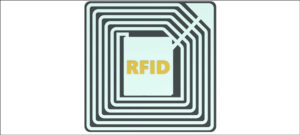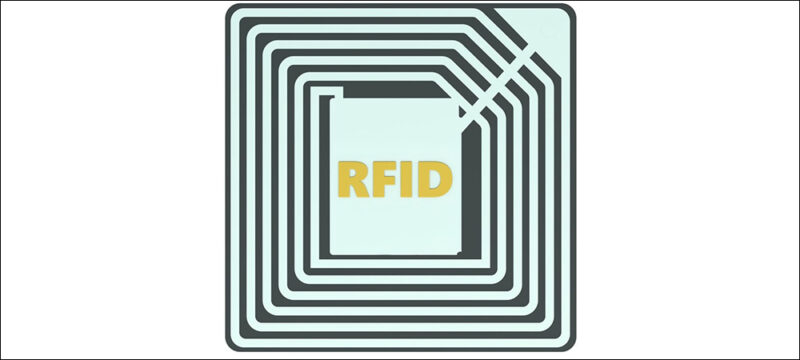Ed. Note: This post originally appeared at the blog of RFID Journal LIVE!, the world’s largest conference and exhibition focused on RFID and related technologies.
Modern radio frequency identification (RFID) systems support thousands of applications around the world. From checking out books at a library to keeping track of runners during a race, RFID technology provides efficient, smart and convenient identification processes that support any number of industry-specific operations.
Using radio waves, RFID can write, store and transmit information without requiring line-of-sight scanning. Easily reading data from RFID tags allows you to identify single items or entire batches of goods simultaneously. To help you understand every element involved, here’s what you need to know about storing and reading data on and from RFID tags.
 How to Store and Read RFID Tag Data
How to Store and Read RFID Tag Data
Every RFID solution comprises two main elements: the tags attached to items, and the readers that interrogate those tags. Tags use a chip to store information and can transmit that data via a specific frequency programmed onto the chipset. Readers interpret the radio frequency, read the tag’s data and thus calculate its identity.
What Is the Basic Architecture of RFID Tags?
RFID tags employ a chip and an antenna to broadcast information or respond when prompted to do so by an RFID reader. The chip stores the information, while the antenna responds to requests or repeatedly sends out the tag’s information for any reader within its vicinity to receive. Since readers request the information from RIFD tags, some users refer to the devices as interrogators.
How Do RFID Readers Work?
A reader uses the frequency of radio waves to understand a tag’s identity and record any other information stored on that tag. You can program tags to respond differently to readers as required, with one of the most common examples being a retail outlet’s security system. Retailers add tags to clothing items to prevent theft by triggering an alarm if a tag leaves the store.
While this implementation of RFID technology is simple, it’s extremely effective when it comes to limiting losses. Readers can be used for any number of applications around your business to ensure efficiency throughout operations. RFID reader models range from highly complex asset-management terminals to simple retail scanners that protect stock.
What Are the Latest RFID Applications?
RFID’s microchip architecture makes it ideal for numerous applications. The cost of the tag ranges from a few cents apiece to several dollars, depending on what items you want to track and what features you need to be included. Ultrahigh-frequency (UHF) RFID tags are small enough to fit into almost any application imaginable. While retail remains one of the biggest RFID scanning adopters, the next generation of tags and devices will make the technology indispensable in many more industries.
At Which Frequencies Does RFID Operate?
Since RFID technology utilizes the electromagnetic spectrum, the frequency at which your specific system operates will influence its capabilities. RFID solutions employ low, high and ultrahigh frequencies, and some systems go up to microwaves to broadcast information to readers. Microwave systems are common in tolling applications and can operate at the 10 GHz range.
For most general applications, the frequencies involved are low-frequency (LF), high-frequency (HF) and ultrahigh-frequency (UHF). LF ranges between 30 and 300 kHz and allows for a scanning range of 10 centimeters (3.9 inches). HF increases the range to 30 centimeters (11.8 inches), while operating at 13.56 MHz. And UFH involves radio waves between 300 and 3,000 MHz, and increases the range to 25 meters (82 feet) for passive tags or more than 100 meters (328 feet) for active tags.
How to Store and Read Data on and from RFID Tags
Storing and reading data starts with an accompanying Electronic Product Code (EPC), which is used as an identifier. Each item receives a unique EPC number that readers can interrogate or change, depending on the application involved. Readers can sense multiple tags at the same time, but detecting items in bulk depends on probabilistic or deterministic collision detection. Probabilistic detection takes longer to complete, as each tag gets a random timeslot in the process, and collisions will receive a new timeslot until the reader completes its scan. Using the binary system, meanwhile, deterministic systems read tag identities bit by bit and avoid collisions by systematically processing each tag.
What Are RFID Transponders and Beacons?
RFID is available as either active or passive systems. Active RFID tags have two main types: transponders and beacons. Transponders wait for readers to send a signal before responding, while beacons transmit a signal every three to five seconds. Passive tags do not have a battery and can only send pre-written information to the readers. Transponders and beacons use batteries to amplify signals, increasing the range of active RFID tags. Passive tags have shorter read ranges, as they use the radio energy from a receiver or interrogator to generate a signal.
How Do You Program RFID Systems?
Each manufacturer provides detailed information about how to program its RFID solution, or else it offers an out-of-the-box system you can use. Manufacturers of RFID readers can advise you regarding what compatible tags are available for their products, as well as how you can configure your system according to your company’s operations. When you need a solution for your logistics operations and supply chains, you can program your workflows and asset-tracking systems from a central hub. If you are working with active RFID tags, you can include detailed product information in your programming instructions at different stages of the product or asset lifecycle.
What Are the Benefits of RFID Systems?
Every organization that needs to automate the process of tracking goods and share product-specific information in near-real time can benefit from RFID systems. You can use RFID to track inventory levels and automatically record check-ins and checkouts of equipment; register vehicles entering or exiting areas for tolling and other purposes; scan and register items, either in bulk or individually, at each stage of your supply chain; and control access to events and areas according to your needs.
To discover all the latest innovations and applications for RFID readers and tags, register your attendance at this year’s RFID Journal LIVE! conference and exhibition, to be held on Sept. 26-28 at Arizona’s Phoenix Convention Center. At LIVE! 2021, you can discuss your requirements with industry experts and find out how other organizations are reinventing their industries using the latest RFID technologies.


